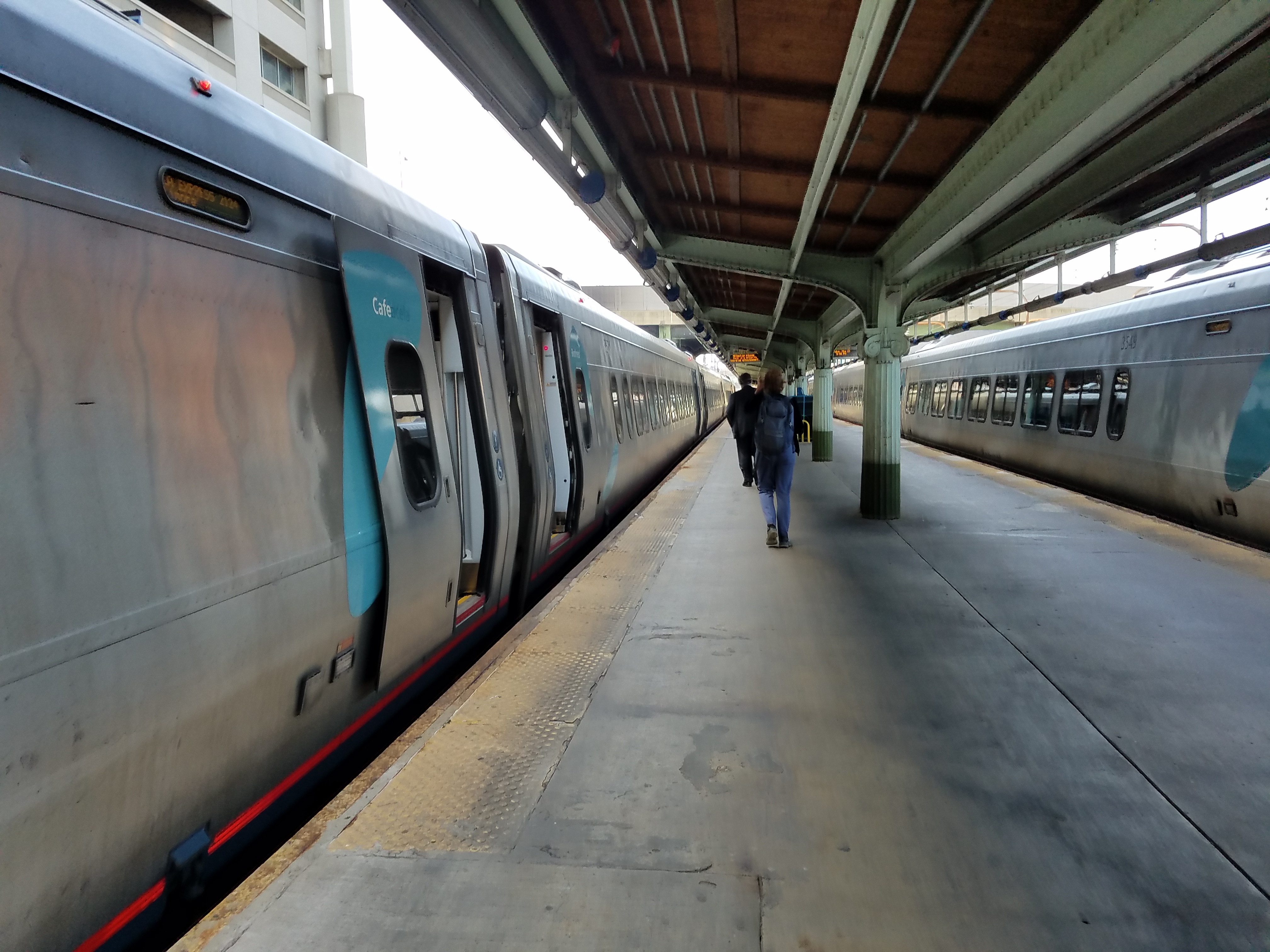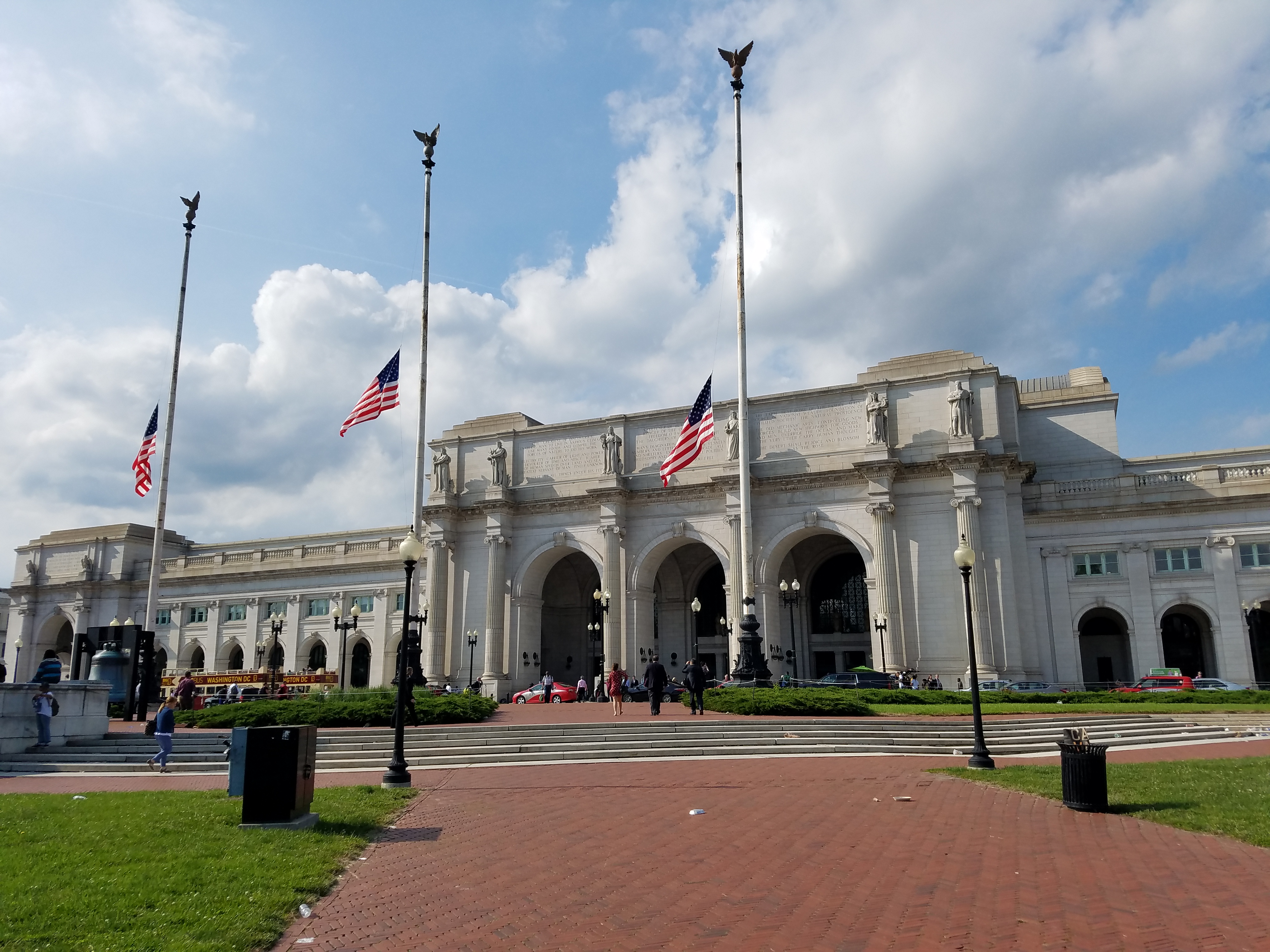Amtrak doesn’t have enough passengers. On many of their routes trains ride mostly empty. They have a cost problem and they have a ridership problem.
The government train operator is addressing the cost of meals, Amtrak has lost nine figures on food service, but doing surprisingly (or not so surprisingly) little to address labor costs.
However they seem to see their ridership problem as a lack of revenue problem and they’er looking to generate more money out of each passenger rather than boost the number of passengers. The Amtrak team, led by former Delta Airlines CEO Richard Anderson, is taking a page from the airline business unbundling looking for possible ways to impose new fees.
A leaked Amtrak memo suggests the National Railroad Passenger Corporation will begin imposing new change and cancellation fees in January.
Riders no longer able to get refunds on or change “Saver” fares 24 hours after they’ve been purchased (Currently, you can get a 75% voucher when you cancel this fare).
The fare classification that’s one level up from “Saver” (“Value”) would be subject to a 25% cancellation fee. And if you change the fare within two weeks of your departure, that would incur a 15% fee (At the moment, these fares can be refunded in full up to eight days before you depart).

Amtrak says this is part of their strategy to become profitable in 2020 but it’s all an accounting gimmick counting government subsidies as revenue and excluding capital expenses (depreciation) as expenses. Amtrak’s 2019 losses are 35 times as high as Anderson claims.
As CEO of Delta, Richard Anderson saw his job as making sure other airlines didn’t get government subsidies. Now his job is literally securing the most government subsidies possible. His strategy for doing this is making Amtrak look fiscally responsible. However making train travel more costly and less convenient isn’t a recipe for higher ridership.

And lest you think you can live with the changes remember that earlier this year Amtrak Guest Rewards imposed new points expiration rules without even telling members.


“They have a cost problem and they have a ridership problem.“
What they mostly have is a “run by idiots” problem.
Perhaps someday Congress will grow a brain and take this nag out behind the barn and execute it.
Who the hell want to ride those old trains
I had to go from Philadelphia to New York. I was going to go by train. It costs about $60. Then I looked up Megabus. I got a fare for less than $6. I took Megabus.
Megabus is usually around $18. If Amtrak were $40, I’d take it.
@derek
Well… the NEC is a profitable line for Amtrak, so by and large, one must assume they’re getting pricing on that line reasonably correct. When I’m on the train between DC and NY, it’s *packed*. Second, I try to travel on saver fares, which are $50 each way. So if you’re paying $60 from Philly, it’s cause they sold out or never offered the cheap fares.
Yeah you can’t really blame Anderson for the profit situation while Congress requires Amtrak to continue all these crazy routes. You say trains are mostly empty but that isn’t on Northeast corridor, that is on the cross country routes. Anderson is just trying to milk as much as he can within the current regulatory framework.
It won’t be interesting to see Amtrak’s financials if they could shed all the employees and routes west of Richmond.
Sadly, I know this mantra retort by heart, as Amtrak is the epitome of ‘flying at night on instruments in the fog; but the instruments are not turned on.’
1) Amtrak’s Board of Directors does not comprise successful, experienced members offering a much needed expertise, as required in Amtrak’s enabling legislation. Instead, as political hanger-ons, has been congressmen, and regional developers in the pocket of Northeastern political players, their is no capacity to ensure accountability, nor to guide management with hands-on stewardship.
2) Despite ex-Delta CEO Anderson adding some ex-fly jocks, he has perpetuated his management problem by continuing a failed program from the past to buy-out/lay-off those in management with any competence/experience. This is obviously reflected in marketing, customer experience, and food/beverage services. That explains the elimination of dining cars on many long distance trains, with the intent of pushing out the higher revenue sleeper passengers in order to discontinue those trains. Meanwhile, talk about discrimination, coach passengers not allowed in replacement food cars, but directed to the pathetic cafe car, with insufficient tables.
2) Amtrak’s highly implausible accounting methodology has never been under the light for a thorough, external, forensic audit to validate its assumptions; why it defies GAAP by shifting costs exclusive to its deficit-ridden Northeast Corridor to the long distance and state-supported sectors. (Remember Justice Brandeis: “sunlight is the best disinfectant”)
3) Unlike other transportation modes, Amtrak does not attribute revenue per passenger mile. This serves Amtrak’s own purpose to the detriment of the long distance train: factual metrics would make the financials for he long distance trains far better than they are, as they typically run full; accommodations are re-sold 2.5 times en route; serve multi-market segments unserved by air or bus; passengers travel average of 800 miles (same as air). Unlike Amtrak, airlines don’t diss their routes or operate one frequency per day to dissuade travelers, “revenues.”.
Best idea today is to eliminate Amtrak, the monopolist, from operating the crucially growing state-supported routes. Instead of serving as an ATM for Amtrak’s financially problematic Northeast Corridor ($52 Billion in the red), allow those states to bid-out all functions to experienced, vetted private operators, just as done in Europe and UK. The concept of Amtrak as a National Network never meant that the National Network of state-supported trains outside the Northeast would at their expense finance Amtrak’s Northeast Corridor.
Just as President Trump has elected to move certain federal departments out of the political milieu of Washington, such a move would be in Amtrak’s best interests-and the rest of the nation not to be subservient to the political whims of the Northeastern political class.
Amtrak has many issues. Their dining service is awful at best, their staff is crummy and there are safety issues for senior citizens. The do not always put the step out for seniors and they turn the train intercom off at ten pm so that u don’t even know the stop u r at and staff is rude.
@Rail Provocateur. Good idea.
The solution is simple, implementing it, now that’s another story.
The person that wrote this article doesn’t have the facts. People, do the research. I am so annoyed by this “few facts, hunches passing as facts and out-and-out fabrications “.
Dan nailed it on the head (which Gary seems to leave out). They are forced to have unprofitable routes. That is why they get government subsidies. If it was run like a “real” business, there would basically only be the Northeast routes. They are not just some kind of subsidy black hole. Also, if you look at the numbers things are improving quite a bit. I’m actually not opposed to this new rule. Saver fares are usually like $39 or $49. You have 24 hours to cancel. Seems fine with me.
The point expiration without warning I definitely do have a problem with though.
Another point, to all those reading who are unfamiliar. Northeasterners LIKE the train. As mentioned, the Megabus is typically somewhere between $5 and maybe ~$40 to get where you want to go (DC, Boston, etc.). Many New Yorkers VOLUNTARILY pay around $89+ (each way) because the experience is that much better that Amtrak provides. From the time savings to the comfort. If Gary wants to attack something, it shouldn’t be management (IMO), he can attack that they are required to provide routes in places that aren’t sustainable.
@Marcella… agreed.
SWA has Zero change fees and three types of fares. They also have fare sales.
Let SWA try to maximize revenue, what do we have to lose?
Otherwise, I predict: luggage fees, carry on fees, some form of basic economy.
And, there is no way you will convince me that the former Delta CEO is looking out for the best interest of Amtrak. This guy could take a polygraph test, answer yes to the question “did you commit the crime”, and fool the polygrapher into thinking “he’s lying, therefore he is not the criminal”, thereby exonerating himself.
For that matter, I don’t know that I would trust a former Southwest guy, but i think the SWA exec would be more honest.
With the advances in technology and all of the widespread portable devices, train travel is viable. One example: air travel typically consumes 6 to 8 hours for a flight that requires a connection. Most of that time is nonproductive, standing in line, or no practical use of electronics. So, people rationalize driving and save time and money.
Train travel can be productive and doesn’t always drain you personally. Throw in an uber ride when you arrive, and airlines will have some real competition on these destinations into the middle of nowhere. Unless the airlines or Amtrak don’t want that.
Personally, I find Amtrak trains to be not very clean, & employees very complacent & lacking very little care/ concern for the customer. Their goal is only to finish their shift/ day or whatever. This said from taking 3 trips with sleeper, all longer than 30hrs. I would love to do more but Amtrak Is pricey. Poor service & cleanliness is enough to say NO. Why are government employees so entitled?
@Dora — I’ve travelled more of the Amtrak network than 99%+ of Americans. You are correct: the employees on the long haul trains are bad. The trains themselves are old, the service is “meh” at best, and the trains are rarely on time. Oh, and the routes are mostly pointless from a time efficiency standpoint for 99% of Americans. That’s just not a business. The short haul routes make more sense but, again, punctuality is a big problem. And fares on the short haul routes make no economic sense for most travellers. Driving or taking the bus are usually better options. Again, not much of a business. So the question becomes how much you want to subsidize this, and how willing you are to subsidize Amtrak’s overpaid work force.
@Marcella- You failed to convey that you are a TA/SA for Amtrak, so forgive my sense of doubt in your general “we don’t have the facts”. Can you provide those facts or do we just chalk your comments up to backing your employer?
Couldnt you at least tell the customers of the rapid reward change? Also since you are closing the station in St.Pete/Pinellas Park what are we to expect in the future?
One long haul train that seems forgotten in all this is the auto train. The auto train serves primarily senior riders heading to and from Florida along with their cars. The dining car as already been abolished for coach riders but making the saver fares non refundable is totally unreasonable. Because we drive our cars to the train station for the trip to florida we often have to change our plans because of driving conditions i.e snow. Their are so many things to plan for this trip booking early is one less problem. The auto trains purpose and clients are quite different from other train riders and should be dealt with in a different manner.